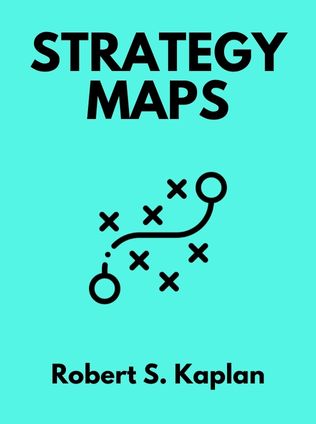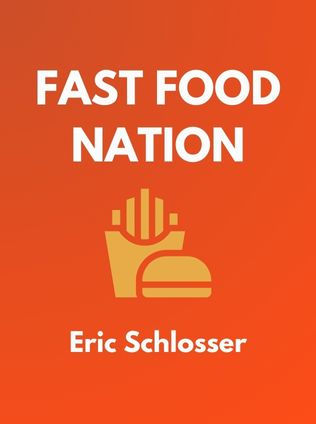
Strategy Maps
Converting Intangible Assets into Tangible Outcomes
By Robert S. Kaplan,
Published 02/2004
About the Authors
Robert S. Kaplan and David P. Norton are prominent figures in the field of strategic management and performance measurement. Kaplan, a professor at Harvard Business School, is renowned for his work in leadership development and management accounting. His contributions have significantly shaped the understanding of how businesses can measure and manage performance beyond traditional financial metrics. David P. Norton, co-founder of the Balanced Scorecard Collaborative, has partnered with Kaplan in developing and promoting the Balanced Scorecard (BSC) framework. This framework helps organizations align business activities to the vision and strategy of the organization, improve internal and external communications, and monitor organizational performance against strategic goals. Together, Kaplan and Norton have authored several influential books that have become cornerstones in the study of strategic management.
Main Idea
The book "Strategy Maps: Converting Intangible Assets Into Tangible Outcomes" introduces the concept of strategy maps as a tool to visually depict an organization's strategy. Kaplan and Norton argue that traditional financial metrics are insufficient for capturing the full scope of an organization's value, as they often overlook intangible assets like human capital, information systems, and organizational culture. According to the authors, intangible assets can constitute over 75% of a company's market value, yet these assets are rarely measured or managed effectively. The strategy map provides a framework for linking these intangible assets to tangible outcomes, allowing organizations to better align their strategies, resources, and capabilities to achieve long-term success.
Table of Contents
- Strategy Maps
- Value-Creating Processes
- Intangible Assets
- Building Strategies and Strategy Maps
- Case Studies and Applications
1. Strategy Maps
Strategy maps are a visual representation of an organization's strategy, illustrating the cause-and-effect relationships between strategic objectives across different perspectives of the Balanced Scorecard: financial, customer, internal processes, and learning and growth. These maps serve as a powerful tool for aligning the organization’s intangible assets with its strategic goals. Kaplan and Norton emphasize that a well-crafted strategy map can communicate the organization’s strategy to all employees, helping them understand how their roles contribute to the company’s success.
"A strategy map provides a visual framework for integrating the four perspectives of the Balanced Scorecard—financial, customer, internal processes, and learning and growth—into a coherent narrative" - Robert S. Kaplan and David P. Norton
For example, a company that prioritizes customer satisfaction may include objectives such as improving service quality or reducing response times in its strategy map. These objectives are linked to financial outcomes, like increased customer loyalty and revenue growth. By clearly defining and communicating these linkages, strategy maps help ensure that all parts of the organization are working towards the same goals.
2. Value-Creating Processes
Kaplan and Norton identify four key value-creating processes that organizations must manage effectively: Operations Management, Customer Management, Innovation, and Regulatory and Social Processes. These processes are critical for delivering a differentiated value proposition and enhancing productivity.
Operations Management
Operations management focuses on producing and delivering products and services efficiently. It includes activities like managing supplier relationships, optimizing production processes, and ensuring timely delivery to customers. Effective operations management can lead to cost reductions and quality improvements, which are essential for maintaining a competitive edge.
- Develop and sustain supplier relationships to ensure quality and cost-effectiveness.
- Lower production costs through continuous process improvement and efficient use of resources.
- Enhance delivery services to meet customer expectations and reduce service costs.
- Manage operational risks to minimize financial distress and enhance stability.
For instance, companies like Toyota have excelled in operations management by implementing the just-in-time inventory system, which reduces waste and enhances efficiency. Such practices not only improve the bottom line but also contribute to a stronger market position.
Sign up for FREE and get access to 1,400+ books summaries.
You May Also Like
Rich Dad Poor Dad
What the Rich Teach Their Kids About Money - That the Poor and Middle Class Do Not!
By Robert T. KiyosakiFreakonomics
A Rogue Economist Explores the Hidden Side of Everything
By Steven D. Levitt and Stephen J. DubnerThe Lean Startup
How Today's Entrepreneurs Use Continuous Innovation to Create Radically Successful Businesses
By Eric RiesWho Moved My Cheese?
An Amazing Way to Deal with Change in Your Work and in Your Life
By Spencer Johnson, M.D.Factfulness
Ten Reasons We're Wrong About the World – and Why Things Are Better Than You Think
By Hans RoslingMake Your Bed
Little Things That Can Change Your Life...And Maybe the World
By William H. McRaven



















